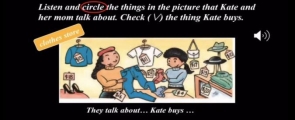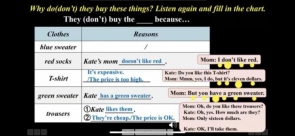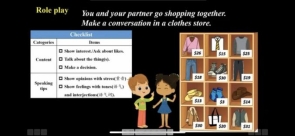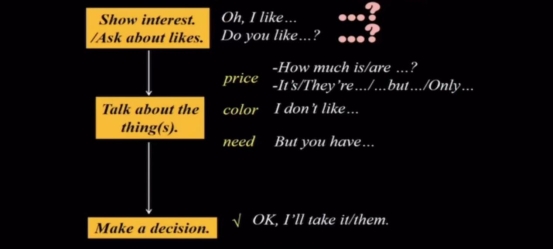


- 【同步教案】人教新目标版英语七年级上册--Unit 7 How much are these socks Section A 1a-2e 教案(表格式) 教案 1 次下载
- 【同步教案】人教新目标版英语七年级上册--Unit 7 How much are these socks Section A 3a-3c 教案(表格式) 教案 1 次下载
- 【同步教案】人教新目标版英语七年级上册--Unit 7 How much are these socks Section B 2a-3b 教案(表格式) 教案 1 次下载
- 【同步教案】人教新目标版英语七年级上册-- Unit 8 When is your birthday? Section B 1a—1d 教案(表格式) 教案 1 次下载
- 【同步教案】人教新目标版英语七年级上册--Unit 8 When is your birthday? Section A 3a-3c 教案(表格式) 教案 1 次下载
人教新目标 (Go for it) 版七年级上册Section B优质表格教学设计及反思
展开Go For It 7A Unit 7 Section B 1a-1e | ||
Analysis of teaching material What: Through the introduction of clothing, learn some common clothing terms; How much is this T-shirt? How much is this T-shirt? It's seven dollar. How much are these socks? They are two dollars. What color is it? It is red. What color are they? They are green ; Learn some common language expressions when shopping for clothes; Can read some simple clothing advertisement information and write some simple advertisement. Why: In Section B, we will continue to learn more than 10 basic words in Section A. It is an important knowledge point for us to talk about clothing prices more broadly. This part also expands the theme of shopping dialogue between salespeople and customers in Part A, and shifts the focus of training from discussions between customers on clothing prices and personal preferences to training students to read promotional posters in shopping malls and write simple personalized advertisements. How: By learning guided questions such as how much and what color, as well as answers, students learn how to ask about price and color; Learn to talk about clothes and how to shop. Training image thinking and abstract thinking ability, cultivate image thinking, in-depth understanding of language. Accumulate life experience, improve comprehensive language expression ability. At the same time, in the process of group learning, students develop teamwork spirit and learn to thank others. | ||
Teaching objectives By the end of the lesson, students will be able to:
| ||
Teaching focus Through the analysis of listening materials, guide students to call appropriate stress to express opinions, use appropriate tone and modal words to show emotions. | ||
Anticipated difficulties Through the creation of situations, students are guided to use what they have learned to create shopping dialogues. | ||
Teaching procedure | ||
Teaching objectives | Teaching procedures | Introductions |
| Activity 1: Guess some numbers about me T: My name is Effy and welcome to my class. As your new teacher, do you want to know something about me? S: Yes. T: Oh, yes. Now guess some numbers about me, okay? You can ask me like this. Do you? Or are you? The first one, you please. S: Are you 27? T: Yes, I am 27. And sit down please. And what about this one? Let me give you a hint. Who can have a try? Hey, can you? S: Are you 36? T: I'm 27. Am I look? Do I look like 36? Have a try to use 36? Look at this picture. S: Are these are day 36? T: You mean the number of the students? S: Oh, do you have a 36 students? T: Yes, I do. Thank you. I have 36 students and there are 36 students in my class in Hangzhou. And what about this one? Has something to do with this festival? What kind of festival is this? S: Double 11. T: Oh, double 11. So have a guess. 10. Double 11. You please. S: Do you bought 10 things in double 11? T: Yes, I bought 10. The kinds of things on double 11. You're so smart.
Activity 2: Learn the number T: Oh, what's that? Oh, it's my package. I can't wait to open it. So these are the things I bought on double 11. Do you know why I bought so many things? You please. S: Maybe you need them. T: Yes, maybe I need them. And also the prices of them are really low. So do you want to know their prices? Now ask me like this. How much is or how much are something? Who wanna ask? You, please. S: How much are socks? Ball? How much socks? How much are the socks? T: Let's see who can answer. Answer like this. It's or they are. Who can answer? You please. S: The girl they are $12. T: Can you spell 12, please? T, w, e, l, v. Very good, please. Now follow me.
Activity 3: Pair work T: So now the prices of them. Now let's have a pair work. Talk about the things and the prices in pairs. For example, okay, Tommy, how much is the basketball? S: It's $20. T: And you ask me how much are the notebooks? They are $13. Okay? Like just what we did. Do this pair work. Okay. Now let's do it.
Activity 4: Conclude the rules + Challenge T: Now look at the blackboard from these numbers. What can you find? For example, from number 13 to number 19? Can you? Yes. S: They are t, e, e, n. T: Thank you. And what about these? What about these? Can you say it? Yes, you please. S: They end with ty. T: Thank you. And another tip for you for numbers like. T: so now you know the prices of these things. He you can see they are a little expensive, but I still like them because I need them. So what do you think of them? Do you like them? Tell me. Like this. I like something because or I don't like something because.
| This step aims at cultivating students' learning ability and language ability to learn new knowledge and summarize and apply the rules in the context. |
| Activity 1: Listen and circle
T: So now these things, and at this time of the year, people go shopping like me and also Kate and her mom. Now, look at this picture. Where are they? S: There are in the closed door. T: Very good. They are in the closed door. And what can you see? For example, I can see a pair of black shoes and they are $18. So what can you see? S: I can see a blue sweater is $15. T: Very good. What else?
| This step aims at cultivating students' understanding ability, language ability and thinking quality of integrating the key information. |
| Activity 1: Listen and fill
T: So why does Kate buy the blue trousers not the other things? Let's listen again. Now look at task 2. Let's listen again and fill in the chart. Hey, are you ready? Okay, let's do it. T: So why does Kate buy the blue trousers not the other things? Let's listen again. Now look at task 2. Let's listen again and fill in the chart. Hey, are you ready? Okay, let's do it. T: Okay. Now let's check the answers. Answer me like this. They buy or don't buy the what? Because... S: They don't buy the red socks. Because his mom don't like red. T: Oh, she doesn't like red. That means she doesn't like the color, right? Sit down, please. So she says this. Let's listen and try to imitate this sentence. S: I don't like red. T: Very good. I heard you put stress on don’t. T: Let's try again. I don't. Ready, go.
Activity 2: Role-play T: So now it's your time to role play this conversation in pairs. Remember to use these 2 speaking tips. And also, if you can add some body languages, it will be better. Okay, now, working pairs. Let's do this. Go.
| This step aims at the cultivation of students' learning ability and thinking quality of text interpretation. |
| Activity 1: Group work T: And just now, you've all practiced a lot and used the sentences in this conversation. So besides these sentences, can you think of more expression, for example, to show interest? Besides, oh, I like, what else can you say when asking about likes? Besides, do you like, what else can you say? And if you make a decision not to buy anything, what can you say? And before that, when we talk about the things besides price, color, need, what else will we talk about and what kind of sentences will use? I'll have a group discussion and write down your ideas on the worksheet here. Turn it back. Okay. Now let's do this group work. Go.
| This step aims at training students' learning ability to establish links between old and new knowledge and language ability of multiple expressions. |
| Activity 1: Make a dialogue
T: Now let's put your ideas into practice. You know, on double 11, the things in Qintian imported commodity city are also on sale. That means they are really cheap. Now suppose you and your partner go shopping together. Please make a conversation in a closed store. And when you are making the conversation, remember to follow this structure and try to use the sentences here. And you can add your ideas. And meanwhile, don't forget to use the speaking tips, opinions with stress and show feelings with tones and interjections. Okay? And maybe you will add some body languages and that will be better. Okay? So now work in pairs. Make a conversation. Okay? Now let's do it.
| This step aims at cultivating students' learning ability and language ability to use what they have learned to communicate in a comprehensive manner, including discourse framework, pronunciation and language strategies. |
Homework Must-do: 1. Read after the tape and imitate the conversation. 2. Record your pair work on video and share it with your classmates. Can-do:
| ||
Blackboard design Unit 7 How much are these socks?
| ||
Reflection This class is learner-centered. The teacher is just an organizer and facilitator to guide students to understand the text and use the language. Generally, they work on the class activities in a communicative way. On the one hand, learning objectives in this class have been basically achieved. Students' curiosity has been awaken so that they are highly involved in the class activities. Meanwhile, students' high level thinking qualities have also been trained during the process of listening and speaking activities. On the other hand, in real class, it is a bit challenging for students in Grade 7 to complete the tasks that they are not good at, like analyzing the stress and emotion of the speakers. I wonder whether it would be better if in the future I were to make a few minor adjustments to the speaking process such as providing students with more hints to lower the rock to their level, giving my students enough time to speak and think. | ||
人教新目标 (Go for it) 版七年级上册Unit 7 How much are these socks?Section B表格教学设计及反思: 这是一份人教新目标 (Go for it) 版七年级上册Unit 7 How much are these socks?Section B表格教学设计及反思,共2页。教案主要包含了_______________,_____________等内容,欢迎下载使用。
初中英语人教新目标 (Go for it) 版七年级上册Section B精品表格教案设计: 这是一份初中英语人教新目标 (Go for it) 版七年级上册Section B精品表格教案设计,共5页。
英语Unit 1 My name’s Gina.Section A优质课表格教案: 这是一份英语Unit 1 My name’s Gina.Section A优质课表格教案,共4页。


















